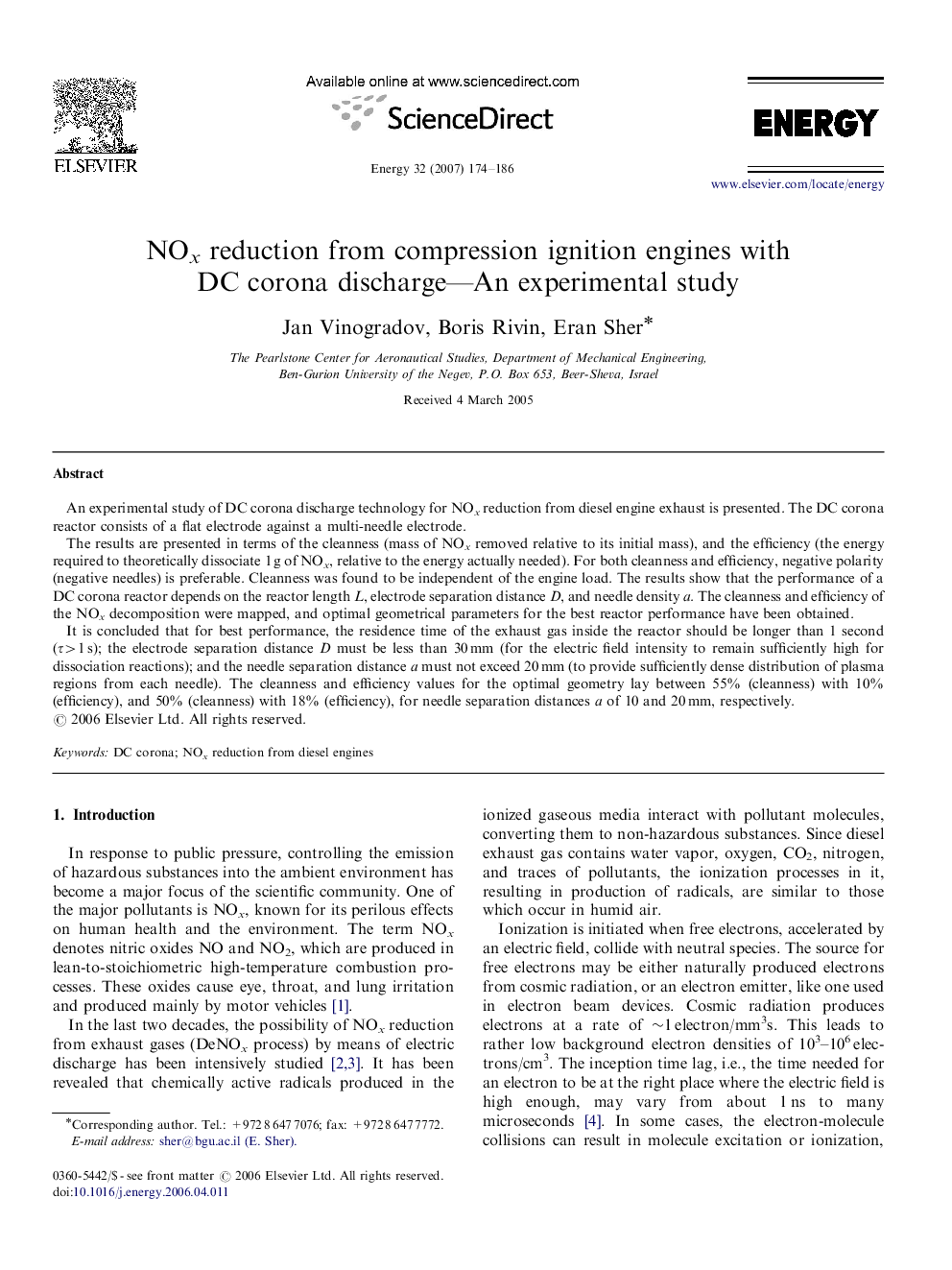| کد مقاله | کد نشریه | سال انتشار | مقاله انگلیسی | نسخه تمام متن |
|---|---|---|---|---|
| 1735964 | 1016200 | 2007 | 13 صفحه PDF | دانلود رایگان |

An experimental study of DC corona discharge technology for NOx reduction from diesel engine exhaust is presented. The DC corona reactor consists of a flat electrode against a multi-needle electrode.The results are presented in terms of the cleanness (mass of NOx removed relative to its initial mass), and the efficiency (the energy required to theoretically dissociate 1 g of NOx, relative to the energy actually needed). For both cleanness and efficiency, negative polarity (negative needles) is preferable. Cleanness was found to be independent of the engine load. The results show that the performance of a DC corona reactor depends on the reactor length L, electrode separation distance D, and needle density a. The cleanness and efficiency of the NOx decomposition were mapped, and optimal geometrical parameters for the best reactor performance have been obtained.It is concluded that for best performance, the residence time of the exhaust gas inside the reactor should be longer than 1 second (τ>1s); the electrode separation distance D must be less than 30 mm (for the electric field intensity to remain sufficiently high for dissociation reactions); and the needle separation distance a must not exceed 20 mm (to provide sufficiently dense distribution of plasma regions from each needle). The cleanness and efficiency values for the optimal geometry lay between 55% (cleanness) with 10% (efficiency), and 50% (cleanness) with 18% (efficiency), for needle separation distances a of 10 and 20 mm, respectively.
Journal: Energy - Volume 32, Issue 3, March 2007, Pages 174–186